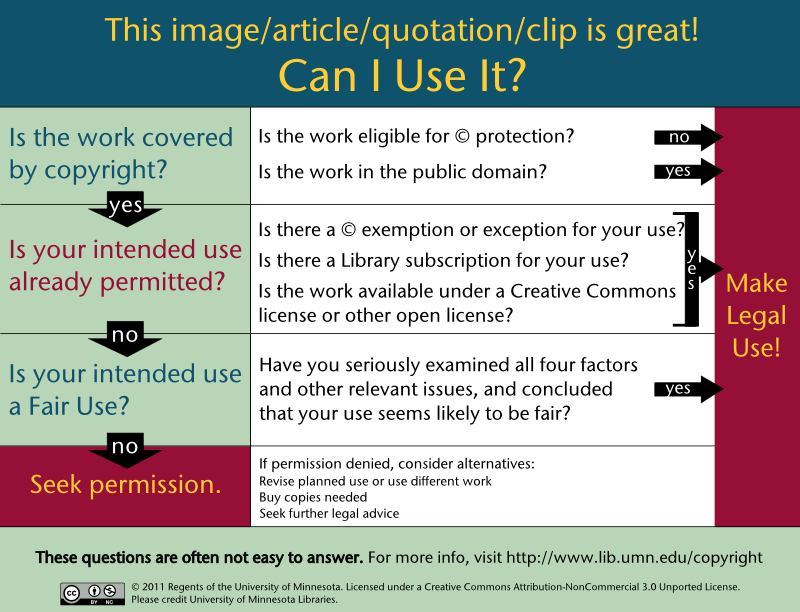“The Copyright Act gives all authors a set of rights that only they may exercise. These include the right to make copies, to prepare derivative works, to publicly distribute, display and perform the work, and in the case of digital sound recordings, to perform the works over a digital network.”
Copyright is a controversial topic. In some cases it’s used to monopolize resources and in others it’s used to protect smaller companies or intellectual properties from being stolen. But that is not the topic of the paper. For now, let’s focus on how to avoid any headaches regarding getting a copyright strike. Fair use is the term used to describe if something can be used, well, fairly. It can be split into four categories.
a) purpose (such as education or entertainment)
b) nature of the work (fictional story or historical fact presentation)
c) the amount used from the original work
d) effect of the usage (does this work negatively impact the original creator)
From above you can tell that there are luckily more than a few ways to get around copyright. If you legally purchased something it is within your full rights to, say, lend your purchase to a friend or make a copy for storage purposes. If you’re using material in an instructional setting there is an extremely low probability that your work would be considered plagiarism, as long as you properly source your material in a professional setting. If you as an instructor are simply using slides to teach, you do not need to cite these. As an instructor your citations should come from the class textbook, but if something is from an outside source you would want to source that.
“In some cases, reproducing the entire work is fair use.”
As mentioned before, copyright is a slippery slope. In some instances entire works are available to the public with no issues, such as some older films. These can be copied and reproduced and even shown to large audiences. Of course you might run into trouble if you go off selling it. There’s unfortunately no real concrete amount of work you can copy or quote from a source that constitutes plagiarism, but the general rule of thumb is to write as much as you can in your own words. The general checklist of “Am I allowed to use this material?” Is as follows:
